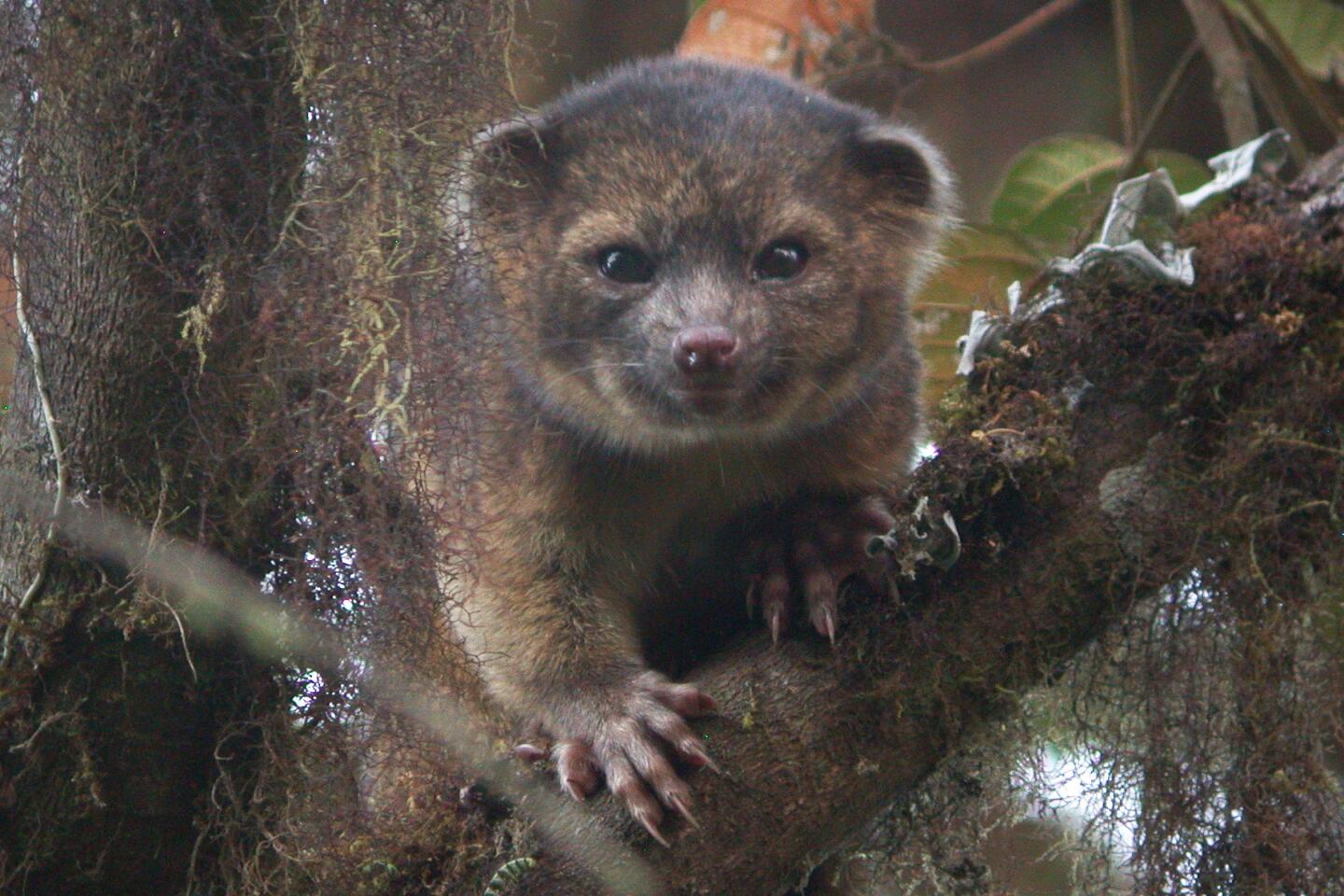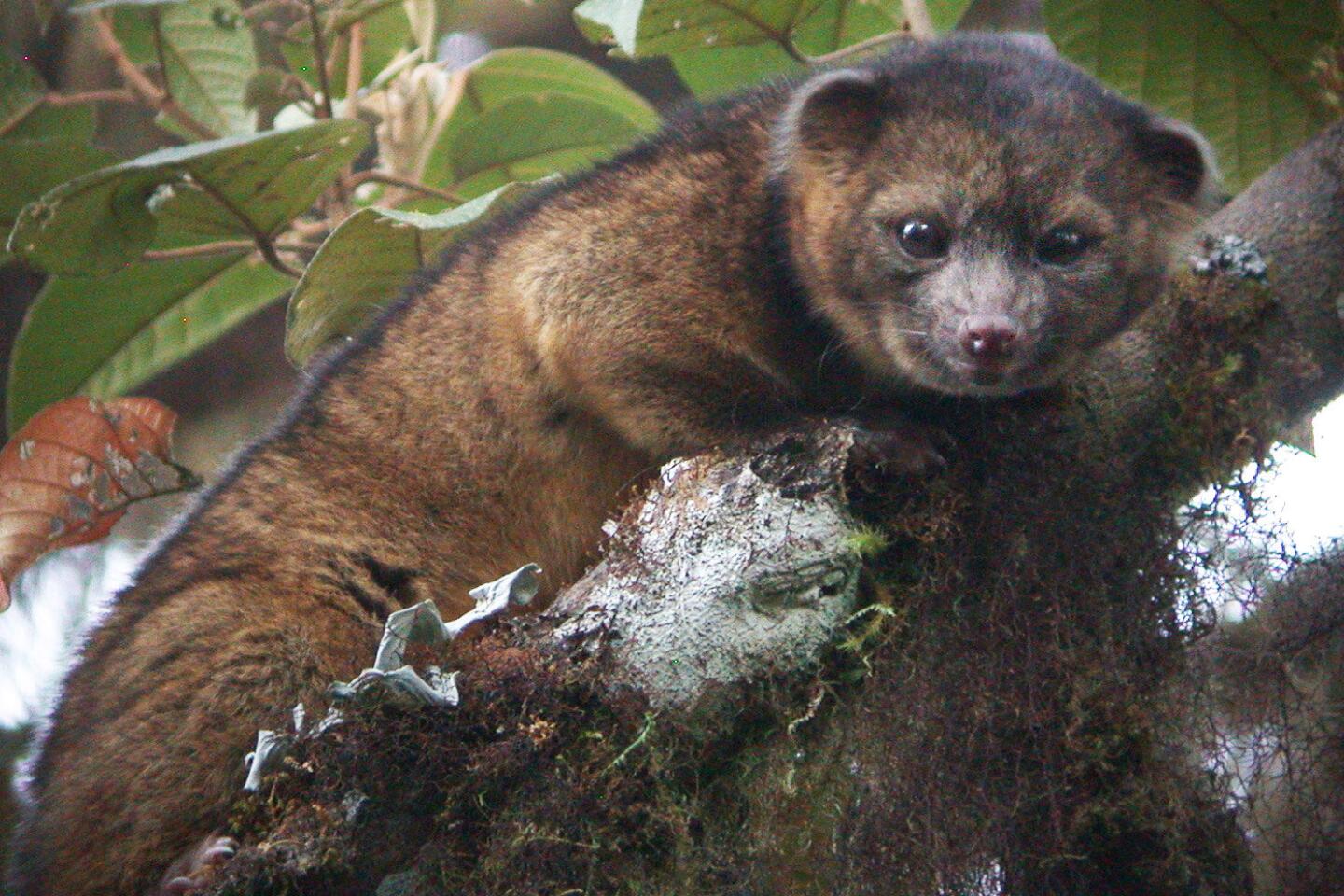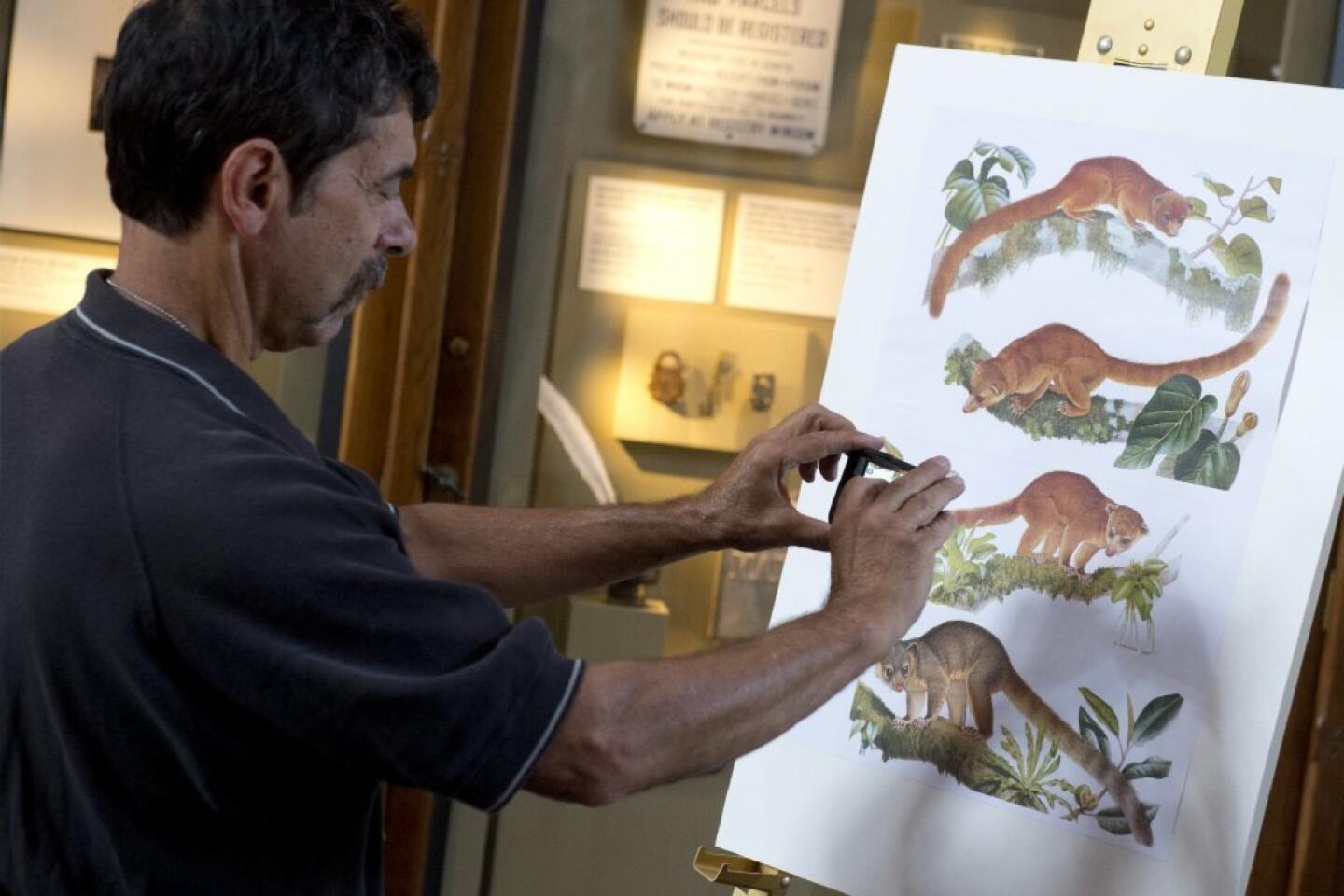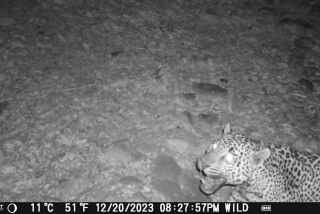Olinguito -- why wasn’t it discovered until now?
- Share via
Hiding out in the treetops of the Andean cloud forest is the furry, fig-chomping olinguito, a mammal that was unknown to science — until now.
It is the first mammal in the order carnivora to be discovered in the Western hemisphere in 35 years.
The olinguito is distinctively adorable -- covered in a thick coat of reddish brown fur with short, furry ears and a long tail reminiscent of a house cat’s.
PHOTOS: Meet the top 10 newly identified species of 2012
Scientists describe it as a solitary animal that mostly eats the large, tomato-red figs that are found in the cloud forests of Ecuador and Colombia -- occasionally supplementing its diet with an insect or two.
It is smaller than its relative the raccoon, but bigger than a squirrel, with an average weight of 2 pounds and an average length of 14 inches.
“It is a beautiful animal,” said Kristofer Helgen, curator of mammals at the Smithsonian National Museum of Natural History and the lead author of a paper describing the olinguito published Thursday in the journal ZooKeys.
Olinguitos--formally called Bassaricyon neblina--are difficult to observe, which may explain how they evaded discovery for so long.
Not only do they live in a remote region of the world, they are also nocturnal and spend their lives in the treetops where they are often obscured by a layer of fog.
“You aim your headlight in the trees and all you can see is a thick gray veil “ said Roland Kays of the North Carolina Museum of Natural Sciences and a co-author on the paper. “They also jump around through the trees, which is pretty crazy considering they are doing it at night when it is pitch black.”
Helgen stumbled on the olinguito not in the cloud forests of South America, but in the Field Museum of Chicago in 2003. He was there to look at the museum’s specimens of the olingo, a little-known animal that looks like the olinguito, but is larger and gray in color.
At the museum, he came across a pelt that had been labeled olingo, despite being a reddish color rather than gray.
That mysterious pelt sent him on a decade-long quest to learn more about the animal from which it had come. He traveled to 18 museums and examined 95% of the world’s olingo specimens, finding more mislabeled evidence of his mystery animal, including that it had a different skull structure than the olingo it was so often confused with, and different types of teeth.
Finally, in 2006, he assembled a team of scientists and spent three weeks in Ecuador’s Otonga Reserve on the western slope of the Andes to see if he could find one for himself. The first night of the trip, the team was successful.
“It was very exciting, and also a huge relief,” said Kays. “It was a big research trip, and even though we were following a well-researched hunch, we didn’t know if we would actually find them there.”
Helgen hopes the discovery of the animal will inspire others to keep exploring our world.
“If you feel like the world has been picked over, you have the wrong idea,” he said. “If the olinguito can hide out until 2013, just think about how much else is hiding out there.”








